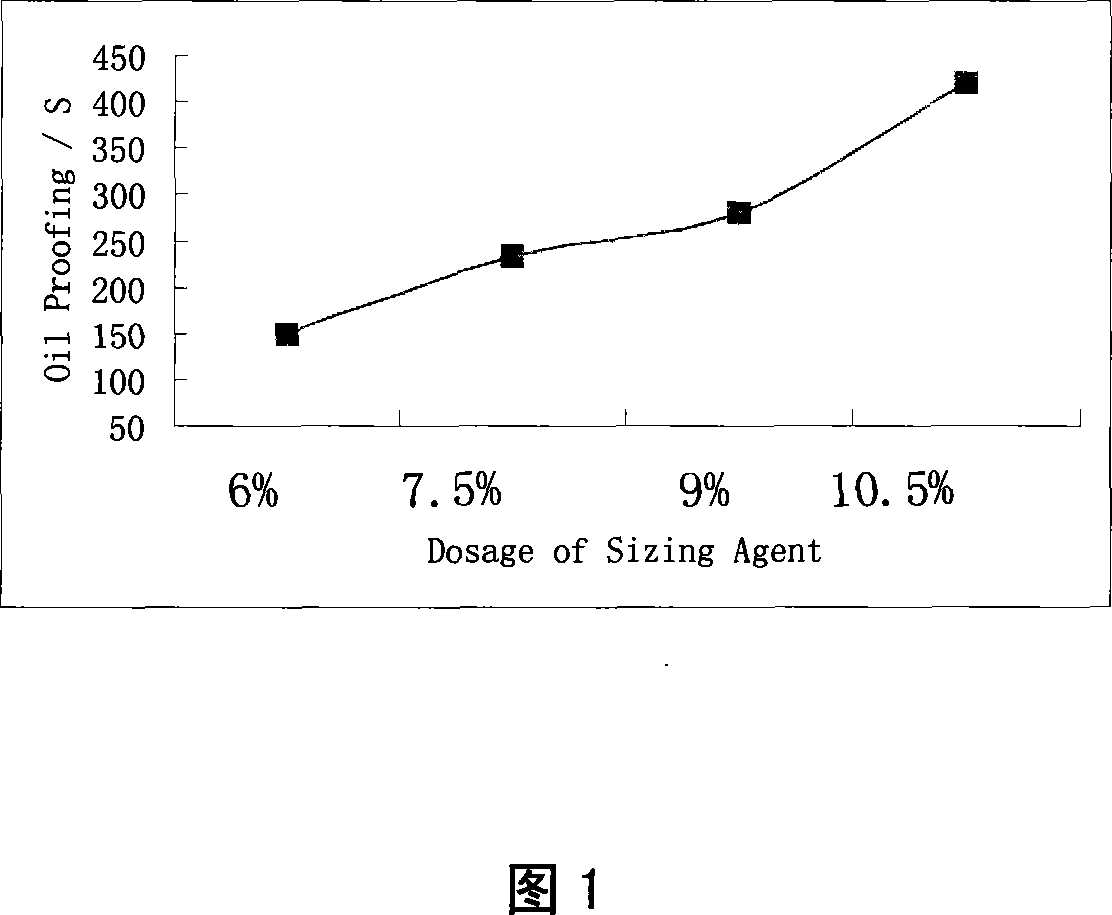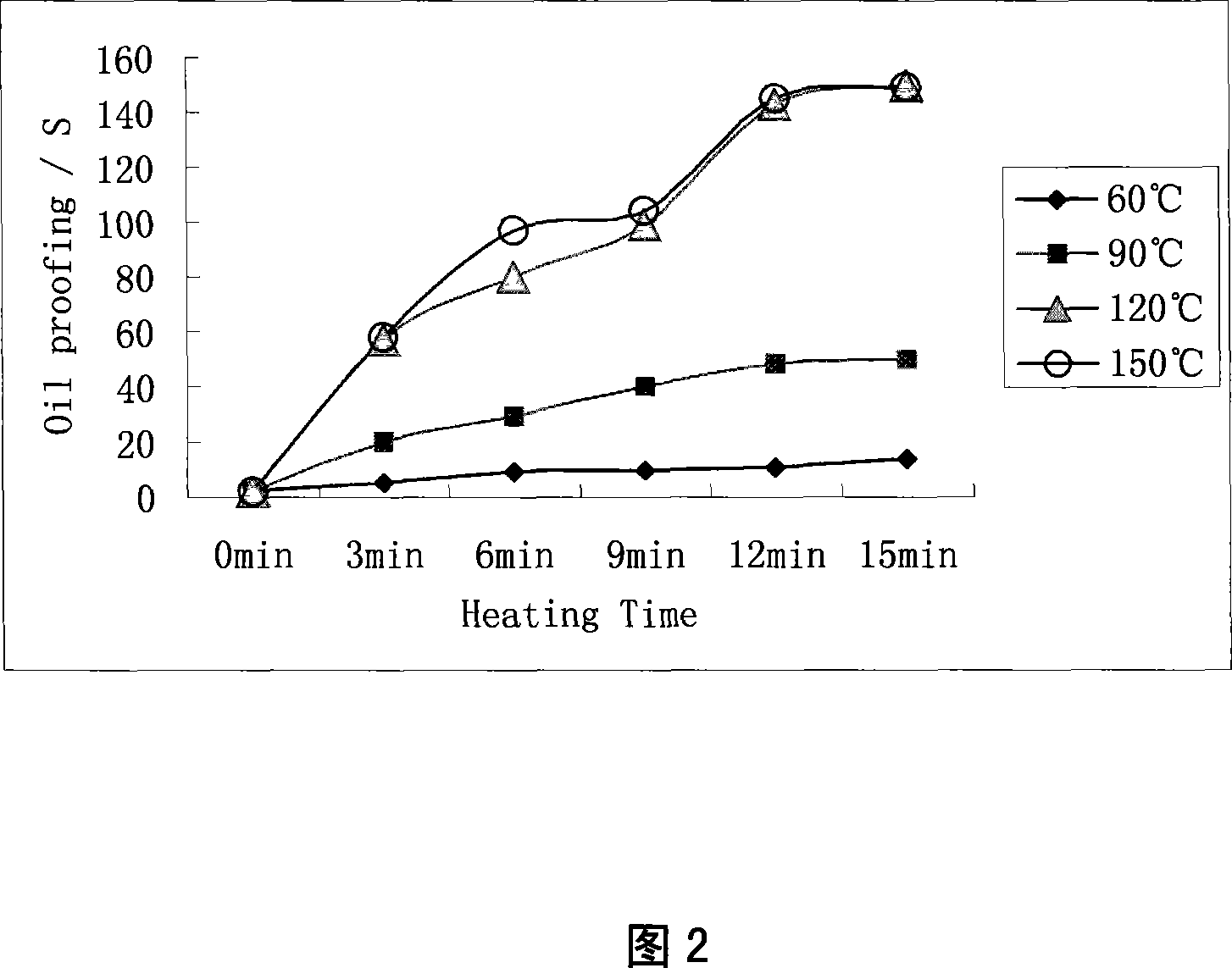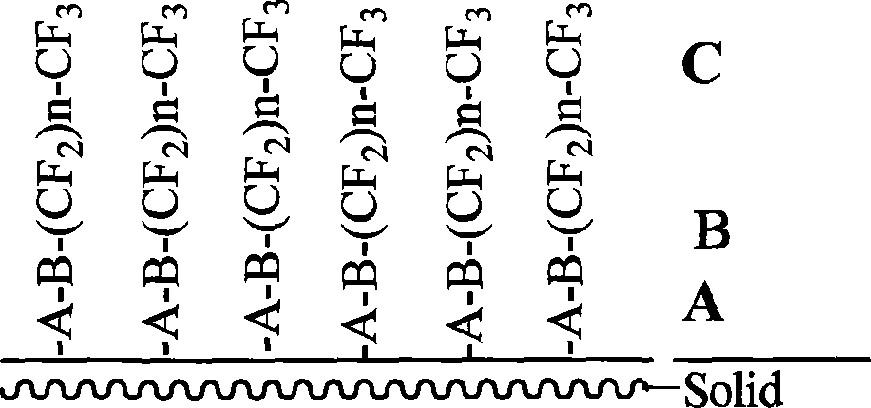Cationic sheet paper fluorocarbon oil resistant agent and producing process thereof
An anti-oil agent and cationic technology, which is applied in the direction of paper, papermaking, textiles and papermaking, etc., can solve the problems of surfactants affecting the oil-proof effect, high energy consumption in the polymerization process, and long reaction time, so as to improve storage stability, The effect of preventing violent aggregation and shortening the time
- Summary
- Abstract
- Description
- Claims
- Application Information
AI Technical Summary
Problems solved by technology
Method used
Image
Examples
Embodiment 1
[0036] Deionized water (40 g), methyl methacrylate (2.5 g), butyl acrylate (2.5 g), cationic monomer (2.5 g) and fluoromonomer (2.5 g) were added to a 250 ml reactor , the ultrasonic frequency is 2×10 4 -2×10 9 Hz and ultrasonic irradiation and microwave source frequency 2000MHz, output power 600W, add cetyltrimethylammonium bromide (0.2 g) and perfluoroalkyl ethoxy ether alcohol nonionic fluorosurfactant (0.15 g) g) and polyvinyl alcohol (1 g), disperse and emulsify, and initiate the decomposition initiator ammonium persulfate (0.15 g), after generating free radicals, form a free radical copolymerization reaction, the reaction temperature is controlled at 85-95 ° C, after 3 - After 5 hours of reaction, (50 g) of soap-free emulsion cationic paper fluorocarbon oil repellant was obtained.
Embodiment 2
[0038] Deionized water (40 g), styrene (2.5 g), butyl acrylate (2.5 g), cationic monomer (2.5 g), and fluorine-containing monomer (2.5 g) were added to a 250-ml reactor, in Ultrasonic frequency is 2×10 5 -2×10 7 Hz and ultrasonic irradiation and microwave source frequency 1500MHz, output power 700W, add octadecyltrimethylammonium bromide (0.23 g) and perfluoroalkyl ethoxy ether alcohol nonionic fluorosurfactant (0.15 g) g) and carboxymethyl cellulose (1.2 g), disperse and emulsify, and initiate the decomposition initiator ammonium persulfate (0.15 g), after generating free radicals, form a free radical copolymerization reaction, the reaction temperature is controlled at 86-94 ℃, After 3.5 hours of reaction, (50 g) of soap-free emulsion cationic paper fluorocarbon oil repellent was obtained.
[0039] During the reaction, acetic acid is used to neutralize the tertiary amine group of the macromolecular copolymer to prepare a cationic fluorine-containing emulsion containing a qu...
Embodiment 3
[0041] Deionized water (40 g), butyl methacrylate (3.0 g), methyl acrylate (2.0 g), cationic monomer (3.0 g), and fluoromonomer (3.0 g) were added to a 250 ml reactor , the ultrasonic frequency is 2×10 6 -2×10 8 Hz and ultrasonic irradiation and microwave source frequency 1800MHz, output power 680W, add octadecyltrimethylammonium chloride (0.21 g) and perfluoroalkyl ethoxy ether alcohol nonionic fluorosurfactant (0.15 g) g) and carboxymethyl cellulose (1.2 g), disperse and emulsify, and initiate the decomposition initiator potassium persulfate (0.16 g), after generating free radicals, form a free radical copolymerization reaction, the reaction temperature is controlled at 86 ± 4 ℃, After 3.0 hours of reaction, (50 g) of soap-free emulsion cationic paper fluorocarbon oil repellant was obtained.
[0042] During the reaction, a buffer solution of sodium acetate and acetic acid is used to neutralize the tertiary amine group of the macromolecular copolymer to prepare a cationic f...
PUM
 Login to View More
Login to View More Abstract
Description
Claims
Application Information
 Login to View More
Login to View More - R&D
- Intellectual Property
- Life Sciences
- Materials
- Tech Scout
- Unparalleled Data Quality
- Higher Quality Content
- 60% Fewer Hallucinations
Browse by: Latest US Patents, China's latest patents, Technical Efficacy Thesaurus, Application Domain, Technology Topic, Popular Technical Reports.
© 2025 PatSnap. All rights reserved.Legal|Privacy policy|Modern Slavery Act Transparency Statement|Sitemap|About US| Contact US: help@patsnap.com



